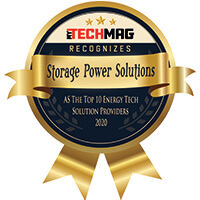The solar industry is pointing towards an immense amount of digital transformation linked to other energy businesses. The transformation has been attributed by the critical findings of DNV GL’s paper on Digitalization and the Future of the Solar Energy Industry, that studies nearly 2000 engineers and senior executives from start-ups to big corporations in the energy area.
Solar businesses are putting an essential focus on blockchain technology to drive their digital transformation, with 12 percent of respondents saying that skillsets to realize blockchain applications are needed in their business, which is 50 percent higher than in other energy industries. The effectiveness of this technology is still in its primary stage, and however, blockchain applications present the opportunity to make an impression on areas such as decentralized energy activities, renewable energy derivation, metering, and billing.
Additional digital technologies that are more exceptional are already an indispensable part of the solar industry. Drones for asset investigations, mapping utilizing satellite data and automatic resource estimation, for example, are extensively used in the solar industry, with 33 percent of respondents saying these are creating an influence on their work, which is 1/3 higher than for the remainder of the energy industry.
Nevertheless, the solar industry also recognized a shortage of standards in their business. Although the solar business has made attempts at standardization, it isn’t as preferred as other industries. Establishing a structure found on digital tools will confirm the industry can advance to the next level.
According to CEO of DNV GL Energy, Ditlev Engel, the solar industry has been generally very progressive in embracing new digital technologies, which has been vital for much of the industry’s enhancement. The company’s survey results reveal that many industries saw the absence of a digital mindset as the main obstacle to digitalization. Nevertheless, only 13 percent of solar respondents ranked this as their number one concern, which is the weakest of all industries surveyed. They witnessed that the mindset of the solar industry is equipped towards embracing new technologies to facilitate advancements in their field, which is an encouraging signal that digitalization will play an integral part in determining the challenges the industry will encounter in the future.
Improvements in Solar Cell Manufacturing
Another space that has made solar PV technologies cost prohibitive contrasted to traditional fuel sources is the manufacturing means. Scientists are also concentrated on ways to improve the effectiveness of how solar components are manufactured.
Magnesium Chloride is one such way, as while over ninety percent of solar panels available in the market today are composed of silicon semiconductors, the critical ingredient to transforming sunlight into electricity, many assume the next generation of solar panels will be made of a thin film technology that utilizes narrow coatings of cadmium telluride in solar cells – this technology guarantees to be a much cheaper and more productive way to engage the photovoltaic method. One significant obstacle for cadmium telluride thin-film cells is that they convert into highly unstable during the manufacturing method, which currently uses cadmium chloride. Researchers have concocted a new, protected and seemingly low-cost way to overcome this difficulty by using a material called magnesium chloride in replacement of cadmium chloride. Magnesium chloride is obtained from seawater, an overflowing resource, which makes the small support cost, as well as non-toxic. Substituting the manufacturing process with this material guarantees to increase the effectiveness of these solar cells from two percent all the way up to fifteen percent.







